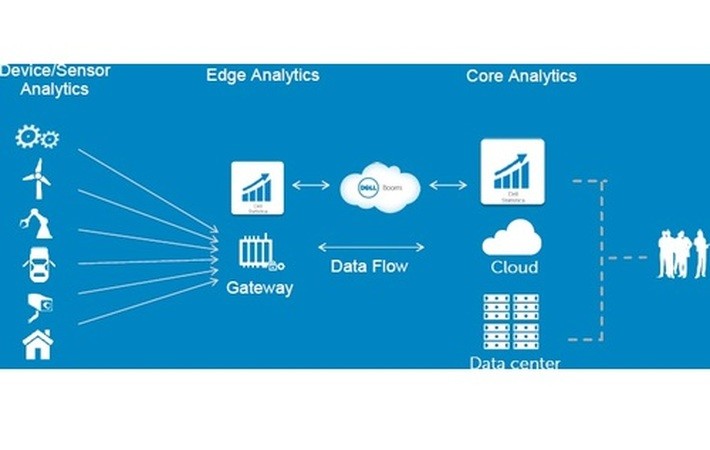
Published on 11/03/2016 | Market Sizing
In manufacturing the Internet of Things (IoT) is not an entirely new concept. Most production facilities have had process control systems, SCADA data and historians for decades. However, with the advent of Industry 4.0 and advances in IoT, the next wave of productivity is coming. In fact, according to a McKinsey report, IoT has the potential to increase productivity by 10 to 25 percent, yielding an economic impact as high as $1.8T by 2025.
A key component of this value is in the use of IoT analytics at the edge in three specific use cases:
1. Capturing sensor data from shop floor tools and equipment to improve production quality and yield
2. Monitoring equipment health through predictive modeling to detect early signs of deteriorating performance and risk of failure
3. Using wearable sensors to track worker health and safety
To help manufacturing to fully take advantage of these capabilities, IBM has joined forces with Cisco to handle the vast amount of data being created at the edge of the network. Combining Cisco edge analytics and the cognitive computing power of the IBM Watson IoT Platform, businesses get a more cost-effective way to obtain real-time insights.
The key advantage of analytics at the edge of the network is to leverage the benefits of analyzing real-time data, without the bandwidth costs that come with sending that data offsite (to the cloud or the data center) for analysis. Manufacturing is time-sensitive in terms of avoiding the production of out-of-spec components, equipment downtime, worker injury or death. For more complex, longer-term tasks data can be sent to the cloud and combined with other structured and unstructured forms of data such as video and audio. Watson IoT understands, reasons and sends back its insights as prescriptive actions or business rules for improved operational efficiency.
Quality is a key metric for a manufacturer that not only impacts plant productivity but also the after-sales warranty cost and customer satisfaction. Unexpected quality loss brings down plant productivity and increases operational and material cost. When applied to quality, metrology and production equipment data, advanced analytics with edge computing has the ability to predict quality issues several cycles in advance, giving businesses the ability to plan remedial measures. This capability has potential to considerably reduce scrap and defects, and improve the overall productivity of the plant.
In combination with external environmental data like temperature, humidity and pressure, edge analytics is capable of adoptive process control — the ability to arrive at optimal process parameter set-points and tolerances based on environmental conditions. In plant operations like painting, such a capability can bring consistent quality and significantly increase yield.
Metrology companies and manufacturers are continuously looking for innovative ways to measure quality parameters with increasing accuracy and speed, thus increasing the sampling rates and quality assurance coverage. Predictive analytics when applied with near real-time edge computing can increase the quality assurance coverage virtually, enabling consistent quality in the manufacturing operations.
Edge analytics can increase your ability to monitor and react to equipment health, resulting in lower costs. Evaluating asset performance at the point of monitoring helps drive corrective action and reduce premature degradation. It is estimated companies can recover as much as half their annual maintenance budget by aligning maintenance investment to asset condition. Increased condition-based and predictive maintenance frees up capital investment for other expansion projects or return on shareholder value.
As examples, consider condition-based maintenance (CBM) and predictive maintenance. CBM uses sensor data from equipment and applies a monitoring strategy that uses the actual condition of the asset to decide when and what maintenance should be done. CBM can augment a time-based maintenance strategy and help reduce failures. This results in a lower cost of maintenance overall due to the right-sizing of maintenance intervals.
Predictive maintenance applies a deeper analysis of historical data to build predictive models for asset health and failures. These models are then used to predict failures, giving operations and maintenance the time to address impending issues with decreased risk of failure. Predictive models can be developed as an extension of CBM and used to understand potential failures of equipment in real-time.
These approaches are both very different from traditional time-based maintenance where there is often a risk in over maintaining a piece of equipment or damaging a component during a routine inspection. Let’s take welding robots, for example, by monitor the robot health through predictive modeling to detect early signs of deteriorating performance and risk of failure we can avoid both downtime and faulty welds. With edge analytics for real-time monitoring of welding robots based on properties such as vibration, rotation speed, velocity and weld temperature and cloud-based cognitive analytics for forecasting asset health and predicting component failures. Predictability of any robot maintenance issues allows for pro-active maintenance during planned operational down time.

In the US alone the cost of preventing workplace injuries and death is staggering, with $84 billion spent annually on preventions and insurance premiums. IBM, Cisco and Human Condition Safety formed a partnership to create an entirely new cognitive feedback loop for work safety. Using wearable sensors on both personnel and equipment, companies will be able to identify trouble spots and see problems before they happen.
Using a network of smart routers placed throughout the facility, Cisco Edge Analytics Fabric (EAF) allows companies to collect, process and analyze distributed data at the source, while more complex tasks are sent to the cloud. As people and equipment move around the facility data, workers and the environment are in constant communication, so that risky behaviors in high-risk areas of plant can be avoided. This allows businesses to better analyze a location’s environmental conditions and identify bad bends, slips and falls, alerting workers to near misses and collisions with equipment in real time.
By being able to separate out what data goes up to the cloud, the cost of bandwidth and storage is substantially reduced as the system gives more preventative insights. In turn, the number and severity of incidents decreases over time, and workplace injury cost and insurance premiums decline.
The end result is not just a safer workspace, but a smarter one — allowing businesses to improve protocols and save lives by learning from the past, clearly seeing the present, and predicting future failures.
The original article can be found here.